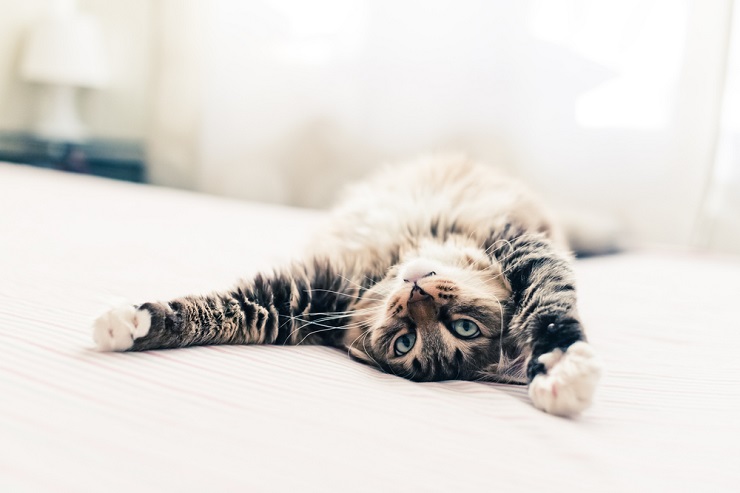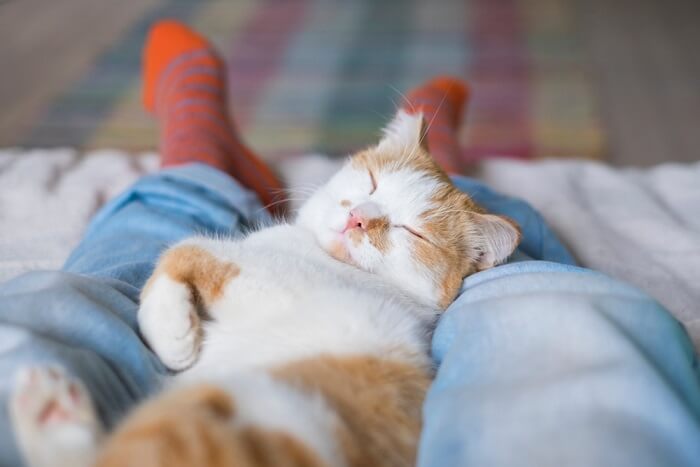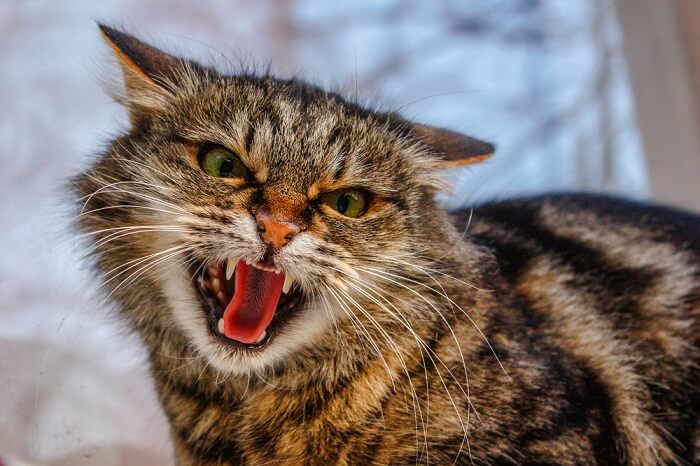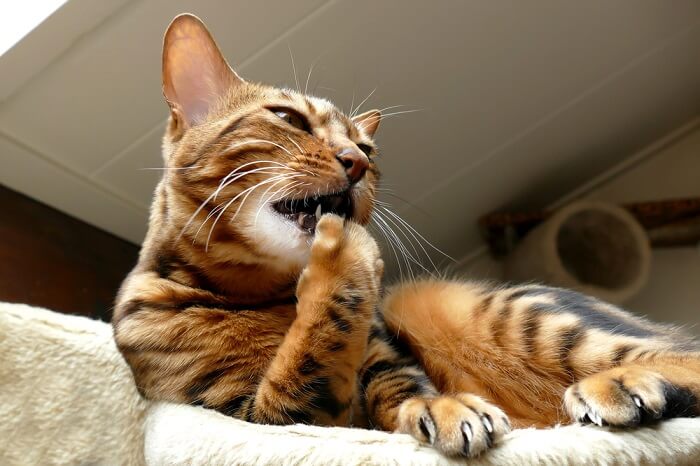Why Do Cats Arch Their Back? Curious Cat Facts
This page contains affiliate links. We may earn money or products from the companies mentioned in this post through our independently chosen links, which earn us a commission. Learn More
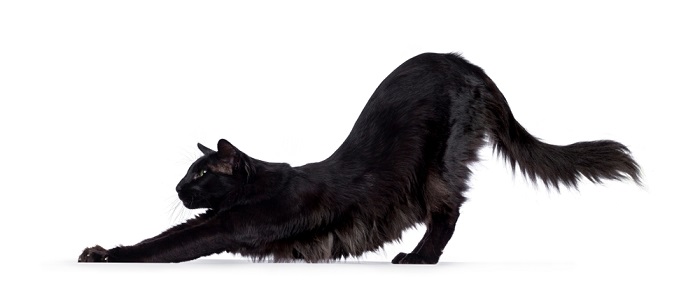
Both cats and dogs like to stretch their back but have you ever wondered why felines enjoy it so much? You probably know that a cat usually arches its back after a nap, having licked its paws.
However, there are several more scenarios in which your cat will arch its back, turning into a top contortionist of the animal kingdom.
Stretching Out
The internet is full of exercises that you can do at your office desk, using nothing but a swivel chair. This is because humans aren’t sedentary creatures, so we get stiff after staying in the same position for hours.
Cats are similar to us in this aspect, as they like to stretch having napped for hours. However, unlike us, their bodies are way more flexible. If you have ever attempted to subdue your cat by grabbing by the collar/neck, then you know it can wiggle out of the tightest of grips.
Types Of Stretches
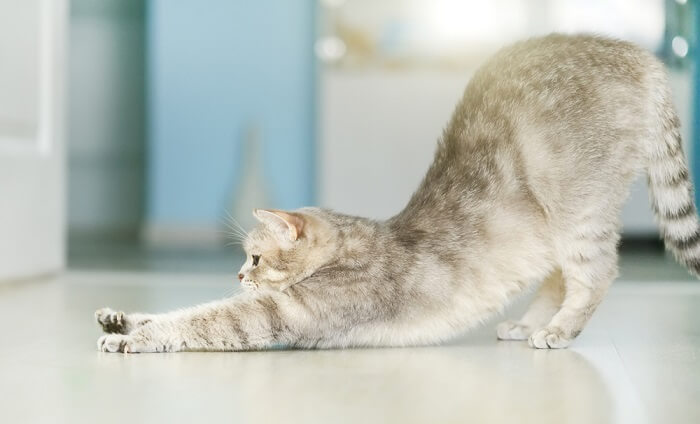
If you have paid attention closely, you might have noticed that cats stretch in more than one manner. The usually stretching involves lowering the head and chest, arching their back, and putting the tail high up in the air.
The second stretch is the one where the animal’s hind legs stretch backward, while the front legs support the weight of the body. Of course, the most iconic feline stretching is the one where the animal arches its back, usually accompanied by a yawn.
Warding Off Potential AggressorsCat’s arched back is part of the animal’s body language and when a cat isn’t stretching, it is probably getting ready for a fight. When it feels threatened, the cat arches its back and demonstrates piloerection, i.e. the hair on its back stands up.
The purpose of the pose doesn’t differ from the rest of the animal kingdom: to appear bigger, so potential enemies would back down. Peacocks fan out their feathers, lizards use head frills, and cats arch their back. These are all examples of deimatic behavior which animals display when they are threatened, yet lack a strong defense.
This unique feline pose has become part of popular folklore over the centuries. Today, Halloween decorations aren’t complete without an image of a hissing cat with an arched back. The pose is scary because this is the cat’s last line of defense, because if it fails, you know there is going to be scratching and biting.
Being Playful
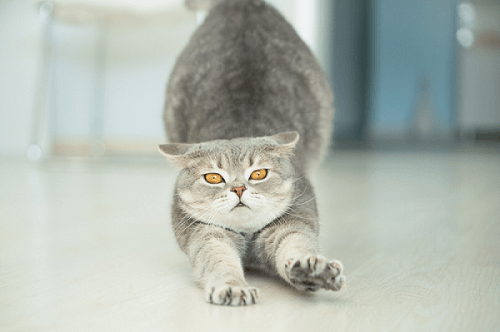
Apart from being a serious warning sign, a cat can arch its back while playing. When the animal is evidently in a good mood, like when it is preparing to jump at a colorful toy, it might arch its back as a sign of being seriously involved in the Montessori game playing along with your kids.
At times like this, when there is no hissing or growling, an arched back is a sign of playfulness. When paired up with pouncing, running, and hopping, this pose indicated that the animal actually likes the human, another cat, or a toy they are playing with.
Do Big Cats Arch Their Back?
Unlike domestic cats, their wild relatives, such as tigers, lions, and leopards don’t arch their backs. Since big cats are predators themselves, they don’t feel the need to arch their back as a defensive strategy. When faced with a serious threat, they rather run away.
How Should Humans React To The Cat’s Arched Back?
When a cat arches its back after taking a nap or while chasing a rubber toy around the house, there is no need for concern. The sight is a true spectacle you can post on a social media platform, such as TikTok or Twitter. In fact, many cats have become famous that way, with personal accounts and millions of followers!
On the other side, when an arched back is accompanied by hissing, growling, a display of teeth, and spitting, you better stay away. This means that the animal feels as if it had been cornered, so it will stop at nothing to defend itself.
Apart from the most usual threats, such as being chased by a dog or encountering a wild animal (e.g. a snake or a coyote), sometimes a child or an overly friendly adult can provoke this reaction.
If they aren’t up for cuddling, cats will run away, growl, make a hissing sound, and ultimately arch their back to drive away pesky humans. Once a cat does this, slowly back away and leave the cat alone or instruct another individual to do so.
There is no simple answer to the question of why do cats arch their backs. In most cases, this is a defensive move aimed at warding off potential attackers, while at other times, it’s a sign of the cat being over-playful. Finally, when a cat arches its back after a long nap, then it’s simply stretching, much like humans do.
Frequently Asked Questions
Why do cats arch their back when you pet them?
They are content. Just like it arches its back when playing, your cat will use the same body language to convey contentment that they are caressed by humans. In this case, an arched back is often accompanied by purring.
What does it mean when a cat raises its back?
It depends on the circumstances but more often than not, it is a defensive move to ward off potential aggressors. In other instances, a cat will arch its back having slept for hours or it will sometimes do so during playtime.
Why do cats arch their back and walk sideways?
Cats perform this action when they are scared and ready to fight. The sideways movement is an attempt to unnoticeably escape a dangerous situation without having to resort to using its claws and teeth. A cat does this when it is faced with an overwhelming foe, such as a human or a natural predator.
What is it called when a cat arches its back?
The arching of the back doesn’t have a name of its own but when the cat raises its back hair that is called a piloerection (from the Latin pilus – “hair” and erigo“to set up, lift”). The bristling of a cat’s hair is the human equivalent of getting goosebumps.

